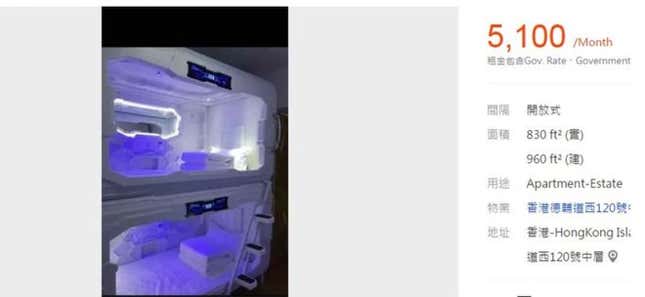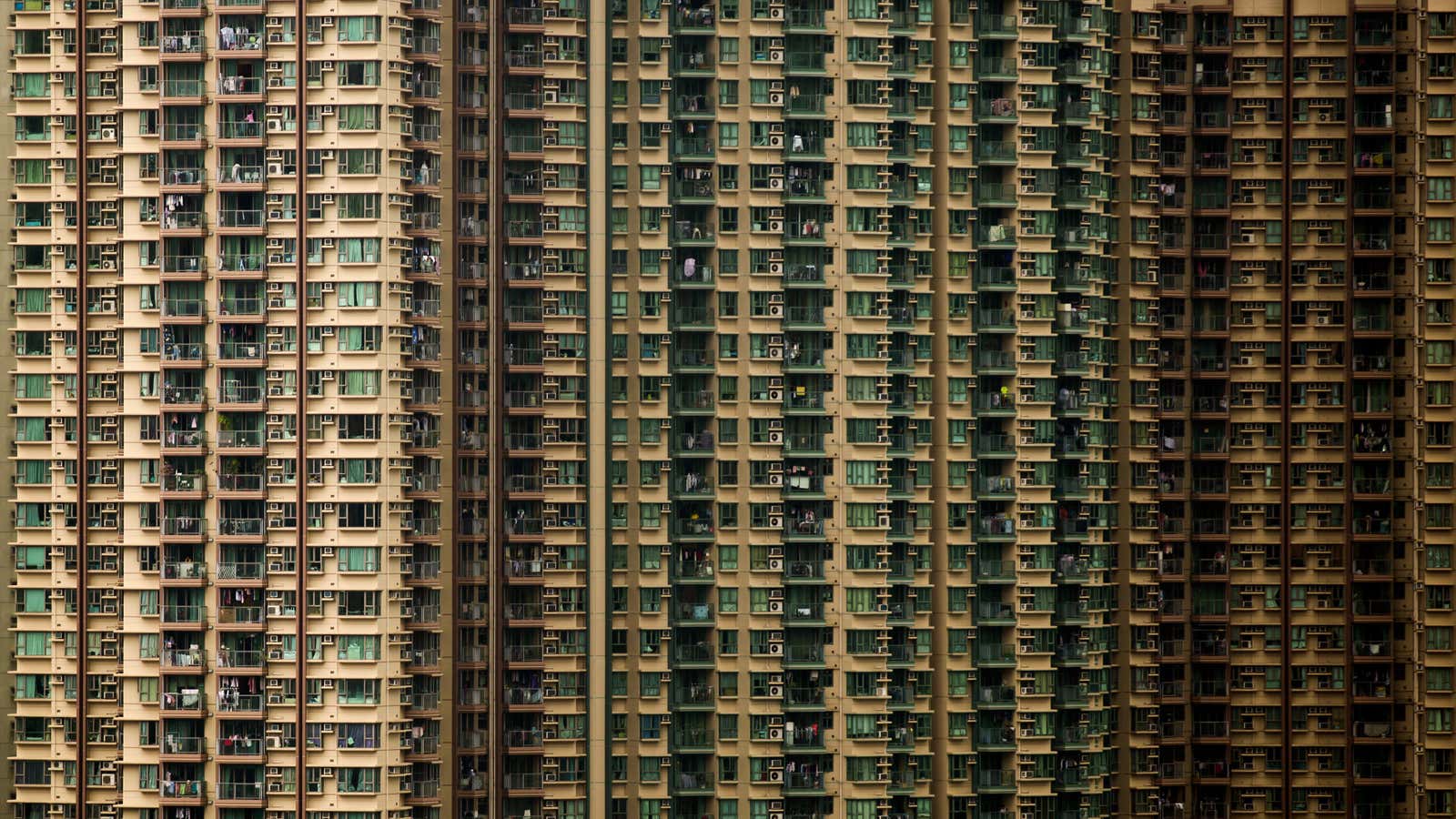Cities are crowded, and the more active and attractive the locale, the more difficult it is for working inhabitants to find affordable dwellings. Throughout history, this has led to odd arrangements—spaces shared with strangers, holing up in hovels.
Hong Kong, one of the world’s most expensive cities, is notorious for such makeshift shelters, including its infamous “cage homes,” or caged spaces, within a dwelling that rent for about $200 a month. Now a local landlord is offering a luxury futuristic take on these micro dwellings for the better-off working person: space capsule pods.
For about $400-650 a month, depending on location and size, a pod renter can have a private capsule in a shared apartment. Units vary in size but are about 25 square feet each, are ventilated, have a built-in bed, three light settings, electrical outlets for charging devices, a television, a computer, and a mini fire extinguisher. Ten units fit into a single 700-sq-ft apartment. Capsule inhabitants share a kitchen and bathroom, a relatively common arrangement for Hong Kong.

In 2015, about 57,100 local households squeezed into Hong Kong homes that were between 75 and 140 sq ft, according to census figures. About 200,000 people lived in 88,000 subdivided apartments. Sandy Wong, inventor of the space capsule pod, told the South China Morning Post, “So many people in Hong Kong are living in cubicle homes or partitioned flats, but the conditions are really bad. There’s no proper ventilation, the places are infested with bugs and they smell. I thought to myself: ‘Is there a way to provide a more comfortable space for these people?’”
Although Wong was criticized for taking advantage of a housing crisis when the micro-units were listed in October, he says that demand has been overwhelming. He plans to build 1,000 more, noting that the 10 capsules listed in the first apartment were all rented in 15 days.
“The capsule homes have been very popular among young people who want a sense of privacy, a comfortable bed, but don’t want to pay so much money,” Wong explained. Indeed, the Hong Kong Free Press points out that a tiny capsule pod costs about a fifth the price of a private studio in the same neighborhood, located similarly close to public transportation.
In short, the pods offer everything a postmodern worker needs—a place to rest and recharge right by the metro.
But subdivisions present dangers. Hong Kong authorities have struggled to prosecute landlords who rent out modified flats for failing to follow fire safety regulations, and so far Wong, too, has avoided issues. Still he has had visits from fire authorities and police, which he says came to nothing and prove the pods are ”perfectly legal and safe.”
Regardless, Wong’s pods show that city life is increasingly as predicted in science fiction. In 1957, JG Ballard—a master of stories about space and architecture—wrote about a place five minutes into the future that was not so different from Hong Kong today.
The Concentration City was so crowded that it had no beginning or end, was constructed in all directions, fear of fire was a constant, and real estate was everyone’s favorite topic. It begins, “Noon talk on Millionth Street: ‘Sorry, these are the West Millions. You want 9775335th East.'”
